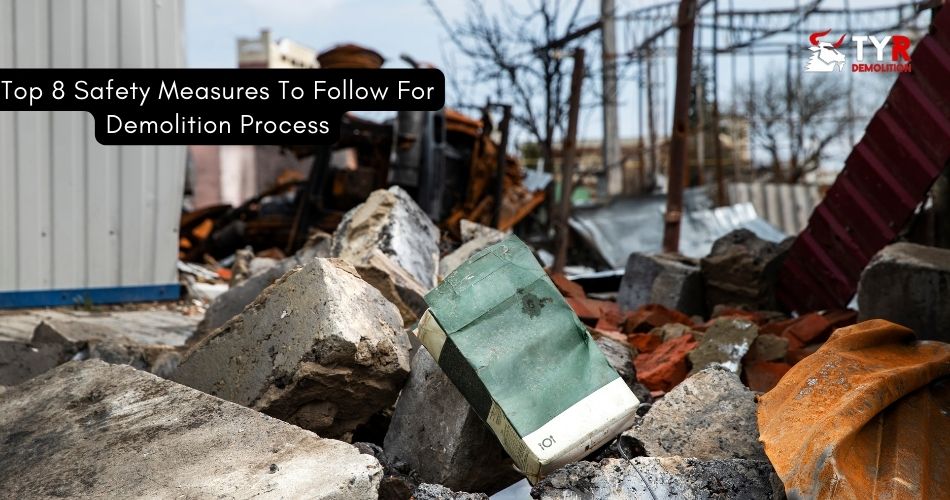The demolition process is inherently risky, necessitating stringent safety measures to protect workers, bystanders, and property. This infographic outlines essential safety protocols that must be followed to ensure a safe and efficient demolition operation.

1. Risk Assessment and Planning
Before beginning any demolition work, a comprehensive risk assessment should be conducted. This involves identifying potential hazards such as unstable structures, utilities, and environmental risks. A detailed demolition plan should be developed, including specific safety procedures to mitigate identified risks.
2. Training and Certification
It is crucial that all workers involved in demolition are properly trained and certified. This training should cover demolition techniques, equipment operation, and safety protocols. Workers should also be familiar with emergency procedures and the correct use of personal protective equipment (PPE).
3. Use of Personal Protective Equipment (PPE)
Workers must wear appropriate PPE, including hard hats, safety goggles, hearing protection, gloves, steel-toed boots, and respiratory protection if needed. PPE should be regularly inspected and replaced when necessary to ensure effectiveness.
4. Securing the Site
To prevent unauthorized entry and protect bystanders, the demolition site must be secured. This involves setting up fencing, barriers, and warning signs to control access and keep unauthorized personnel away from the work area.
5. Utilities Identification and Disconnection
Before demolition begins, all utilities (electricity, gas, water, etc.) must be identified and properly disconnected. Coordination with utility companies is essential to manage these disconnections safely and effectively.
6. Structural Stability and Reinforcement
Assessing the stability of the structure is critical. Reinforcements, such as bracing or shoring, may be necessary to prevent unexpected collapses or accidents during demolition. Ensuring the structure is stable helps protect workers and equipment.
7. Proper Equipment and Tools
All demolition equipment and tools must be in good working condition and used correctly. Regular inspections for defects and maintenance according to manufacturer guidelines are necessary. Equipment should be suitable for the specific tasks involved in the demolition.
8. Emergency Preparedness
A comprehensive emergency response plan must be in place. All workers should be trained to respond to accidents, injuries, or emergencies. The site should be equipped with first aid kits, fire extinguishers, and readily available emergency contact information.
Conclusion
Adhering to these eight safety measures ensures that demolition projects are executed safely and efficiently. Contact TYR Demolition today to prioritize safety in your demolition project. Your safety is our priority!

